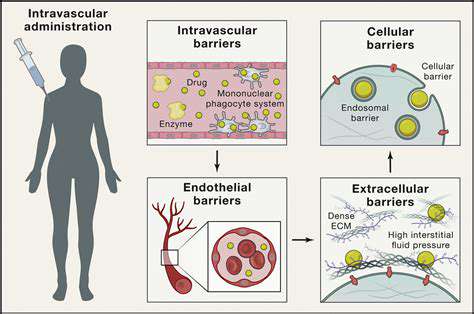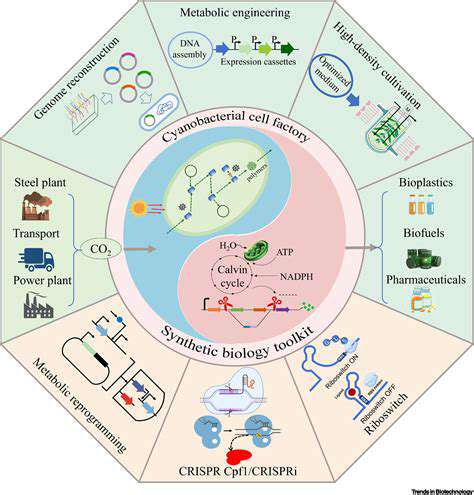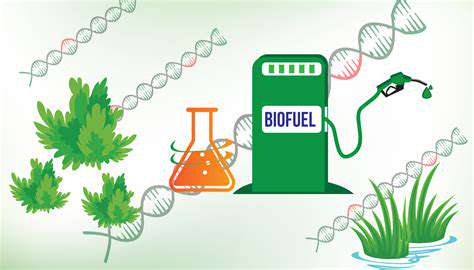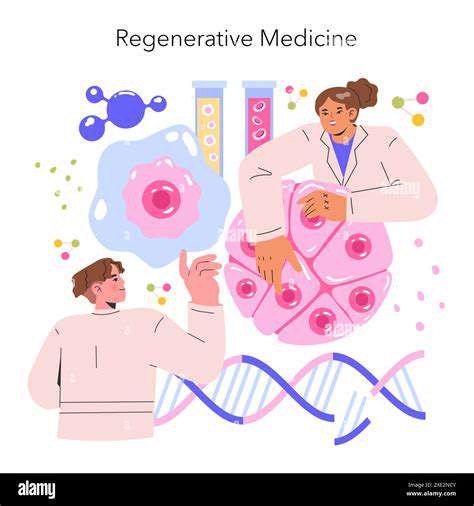Harnessing Photosynthesis for Solar Energy
The process of photosynthesis, where plants convert sunlight into chemical energy, has captivated scientists for decades. Mimicking this natural process offers a promising avenue for developing sustainable solar energy solutions. By understanding the intricate molecular mechanisms within plant cells, researchers are exploring the possibility of creating artificial photosynthetic systems that can efficiently capture and store solar energy. This involves replicating the light-harvesting complexes and the electron transport chains, which are crucial for converting light energy into chemical energy. Such breakthroughs could revolutionize our energy landscape, offering a clean and renewable alternative to fossil fuels.
One particular focus is on creating bio-hybrid systems. These systems combine biological components, such as chlorophyll-based pigments, with synthetic materials, such as nanomaterials or polymers, to optimize light absorption and energy transfer. This synergistic approach aims to overcome limitations of natural photosynthesis, like low efficiency and scalability, to produce a more practical and effective solar energy technology. Scientists are investigating different strategies to enhance the efficiency of these systems, including engineering the arrangement of light-harvesting complexes and optimizing the electron transport chain to maximize energy conversion.
Biofuel Production from Algae and Bacteria
Algae and bacteria offer another exciting avenue for harnessing nature's power in the quest for sustainable energy. These microorganisms can produce biofuels through processes similar to photosynthesis, but instead of storing energy as sugars, they produce biofuels like biodiesel and bioethanol. This approach presents a significant advantage over traditional biofuel production methods, as algae and bacteria can convert various feedstocks into biofuels, including carbon dioxide, waste products, and even wastewater. This opens up opportunities to create sustainable biofuel production systems from waste streams, effectively closing the carbon cycle and reducing our reliance on fossil fuels.
The development of optimized cultivation techniques for algae and bacteria is crucial for scaling up biofuel production. This includes exploring different cultivation environments, such as photobioreactors and open ponds, to maximize growth rates and biomass yields. Furthermore, efficient extraction and purification methods are essential to ensure high-quality biofuel production. Research is also focused on genetically modifying these organisms to enhance their biofuel production capabilities and optimize their metabolic pathways, leading to increased yields and improved efficiency.
Integrating biofuel production with other sustainable practices, such as wastewater treatment or carbon capture, could create synergistic systems for a more holistic approach to sustainable energy. The potential for algae and bacteria-based biofuel production to contribute to a cleaner and more sustainable energy future is immense.
Exploring the genetic engineering of algae to enhance lipid production and optimize biofuel yields is another exciting area of research. Advanced genetic tools are being used to modify algae's metabolic pathways, allowing for improved conversion of sunlight and carbon dioxide into valuable biofuels. This promises to boost biofuel production significantly. Furthermore, innovative bioreactors are being developed to support large-scale algae cultivation, making this technology even more commercially viable.
Engineering Microorganisms for Enhanced Biofuel Production
Harnessing Metabolic Engineering for Biofuel Synthesis
Metabolic engineering, a key component of synthetic biology, allows for the manipulation of cellular pathways to enhance the production of desired biofuels. This involves strategically modifying existing metabolic networks or introducing new pathways to direct cellular resources towards biofuel precursors. For instance, altering the expression levels of key enzymes involved in lipid biosynthesis can significantly impact the yield of biodiesel production. This targeted approach optimizes cellular machinery for maximum biofuel output.
Different microorganisms possess unique metabolic capabilities, each offering a potential platform for biofuel production. Careful selection of the appropriate microorganism is crucial, as it dictates the efficiency and feasibility of the engineering process. Understanding the inherent metabolic pathways of a chosen organism allows researchers to effectively target specific enzymes and optimize the overall metabolic flux towards biofuel synthesis.
Optimizing Microbial Growth Conditions for Enhanced Biofuel Production
Cultivation conditions play a critical role in determining the final yield of biofuels. Factors like temperature, pH, and nutrient availability significantly impact microbial growth and subsequent biofuel production. Optimizing these parameters through careful experimental design allows for the fine-tuning of microbial metabolism, leading to higher productivity.
Employing techniques like fed-batch fermentation allows for the controlled addition of nutrients throughout the cultivation process. This strategy can maximize resource utilization, minimizing waste and maximizing biofuel yield. Understanding the specific nutritional requirements of the engineered microorganism is essential for achieving optimal growth and biofuel synthesis.
Developing Robust Bioreactors for Efficient Biofuel Production
The design and operation of bioreactors are paramount to achieving high-throughput biofuel production. Different reactor types, such as stirred-tank bioreactors and airlift bioreactors, offer varying degrees of mixing and oxygen transfer capabilities. Choosing the appropriate bioreactor design is crucial to maintain optimal conditions for the engineered microorganisms to thrive and produce biofuels.
The scale-up of biofuel production from laboratory settings to industrial-scale operations requires robust bioreactor designs. These designs must effectively manage parameters like temperature, pH, and mixing to ensure consistent biofuel production. Advanced bioreactor technologies are continuously being developed to address the challenges associated with scaling up biofuel production.
Utilizing Genetic Tools for Targeted Metabolic Pathway Modification
Genetic tools like CRISPR-Cas9 provide precise control over the modification of metabolic pathways within microorganisms. This technology enables targeted gene editing, allowing researchers to introduce, delete, or modify specific genes responsible for biofuel synthesis. Employing such tools allows for the creation of microorganisms with enhanced biofuel production capabilities.
Characterizing and Analyzing Microbial Metabolic Pathways
Comprehensive understanding of the cellular metabolic pathways involved in biofuel production is essential for optimization. Advanced analytical techniques, such as metabolomics and transcriptomics, provide insights into the intricate interplay of biochemical reactions. These analyses help identify bottlenecks in the metabolic pathways and guide targeted modifications for improved biofuel synthesis.
Exploring Alternative Carbon Sources for Sustainable Biofuel Production
The use of alternative carbon sources, such as agricultural waste and industrial byproducts, can significantly reduce the environmental impact of biofuel production. Metabolic engineering can be utilized to adapt microorganisms to utilize these alternative substrates for biofuel synthesis. This approach promotes sustainability and economic viability, making biofuel production more environmentally friendly.
Ensuring Safety and Environmental Considerations in Biofuel Production
The safety and environmental implications of biofuel production are crucial considerations. Ensuring the containment of engineered microorganisms and minimizing the potential for environmental contamination is paramount. Strict regulations and safety protocols are necessary to mitigate any potential risks associated with the release of genetically modified organisms into the environment. This rigorous approach assures the responsible and sustainable development of biofuel technologies.
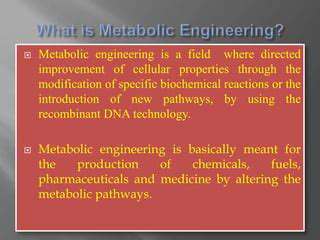
Beyond Biomass: Utilizing Non-Traditional Feedstocks
Exploring Algae as a Sustainable Energy Source
Algae, with their remarkable photosynthetic capabilities, represent a promising non-traditional feedstock for bioenergy production. These microscopic organisms can rapidly convert sunlight into biomass, offering a potentially sustainable alternative to traditional crops. Cultivating algae in controlled environments, such as ponds or photobioreactors, allows for efficient harvesting and processing, minimizing land use and maximizing yield compared to terrestrial biomass crops. This approach could significantly contribute to reducing reliance on agricultural land for biofuel production, a crucial aspect of sustainable energy development.
The diverse range of algae species presents a wide array of potential applications. Different species thrive in various conditions, offering flexibility in cultivation strategies. Further research into optimizing algal cultivation techniques and developing efficient extraction methods for biofuels from algal biomass will be crucial for realizing the full potential of this sustainable energy source.
Harnessing Municipal Solid Waste for Bioenergy
Municipal solid waste (MSW) is a substantial and often underutilized resource. Converting MSW into valuable bioenergy resources through anaerobic digestion or pyrolysis offers a compelling avenue for waste management and energy production. This approach not only addresses the environmental challenge of waste disposal but also provides a sustainable source of biogas, which can be used to generate electricity or heat. The process of converting MSW to bioenergy requires careful consideration of waste composition, efficient processing technologies, and careful handling of potential contaminants.
Utilizing Agricultural Residues for Biofuel Production
Agricultural residues, such as straw, corn stalks, and wood chips, often represent a significant portion of agricultural waste. These residues can be converted into biofuels through various thermochemical or biochemical processes. The use of agricultural residues for biofuel production offers a sustainable approach to utilizing waste materials and potentially reducing the demand for arable land dedicated to energy crops. This approach can be particularly valuable in regions with abundant agricultural production, potentially reducing reliance on fossil fuels and promoting a circular bioeconomy.
Developing Novel Microbial Consortia for Enhanced Biofuel Production
Synthetic biology offers exciting possibilities for enhancing biofuel production through the development of novel microbial consortia. By engineering microorganisms to efficiently convert non-traditional feedstocks into desired biofuel molecules, we can significantly improve the yield and cost-effectiveness of bioenergy production. This approach involves carefully selecting and manipulating microbial genomes to optimize metabolic pathways, leading to higher efficiency and reduced production costs. This innovative approach requires significant research and development to overcome challenges in microbial engineering and process optimization.
Exploring Microalgae for Biodiesel Production
Microalgae, owing to their rapid growth rates and high lipid content, are a promising feedstock for biodiesel production. These single-celled organisms can be cultivated in various environments, potentially offering a sustainable alternative to traditional biodiesel sources like soybeans and palm oil. The process of converting microalgae into biodiesel involves harvesting, lipid extraction, and transesterification. Further research into optimizing these steps and addressing scalability challenges will be essential for realizing the full potential of microalgae-based biodiesel production.
Investigating the Potential of Non-Food Crops for Bioenergy
Non-food crops, such as switchgrass and miscanthus, offer a sustainable alternative to food crops for bioenergy production. Their rapid growth rates and high biomass yields make them attractive candidates for biofuel production. Careful consideration of factors such as land use, water requirements, and potential impacts on biodiversity is crucial for ensuring the sustainability of this approach. Further research into optimizing cultivation techniques and developing efficient conversion processes for these non-food crops will be essential for their widespread adoption in bioenergy production.
Scaling Up for Commercial Applications: Challenges and Opportunities

Expanding the Reach: Practical Considerations for Commercial Deployment
Scaling a successful application from a proof-of-concept or internal use case to a commercially viable product requires careful consideration of several key factors. A crucial aspect involves anticipating and addressing the increased demand that a commercial application will inevitably face. This necessitates a robust infrastructure capable of handling fluctuating user loads and ensuring high availability and performance. Furthermore, comprehensive testing and quality assurance procedures are essential to identify and mitigate potential issues before they impact end-users.
Beyond the technical infrastructure, the business implications of scaling up must be evaluated. This includes developing clear pricing strategies, establishing customer support mechanisms, and preparing for potential growth in marketing and sales efforts. Adapting the application's design and functionality to meet the diverse needs of a wider user base is also paramount. Thorough market research and user feedback analysis are critical to ensure the product remains relevant and satisfies customer expectations.
Finally, the legal and regulatory landscape must be factored into the scaling process. Compliance with relevant data privacy regulations and industry standards is vital to maintain trust and avoid potential legal issues. Careful consideration must also be given to intellectual property protection and licensing agreements to safeguard the application's unique features and functionality.
Managing Resources and Maintaining Quality
Successfully scaling a commercial application demands efficient resource management. This includes optimizing server configurations, database design, and network infrastructure to ensure optimal performance under increasing load. Careful planning and budgeting are essential to manage the costs associated with scaling and maintaining a robust infrastructure.
Maintaining the quality of the application throughout the scaling process is also critical. This includes implementing automated testing procedures to identify defects and ensure the application remains stable and reliable. The use of version control systems and continuous integration/continuous deployment (CI/CD) pipelines is essential for managing code changes and ensuring code quality. A robust bug tracking system and a process for handling user feedback are crucial for addressing issues promptly and effectively.
Ensuring security is paramount throughout the scaling process. Implementing appropriate security measures, including firewalls, intrusion detection systems, and regular security audits, is vital to protect sensitive data and maintain the integrity of the application. Security breaches can have significant financial and reputational consequences for a commercial application, so proactive measures are critical.
Scalability needs to be built into the application from the outset, not bolted on later. This means designing the architecture from the ground up to handle future growth. This approach will prevent costly, time-consuming, and potentially disruptive modifications down the road. A well-designed application will support future growth and maintain high performance as the user base expands.
